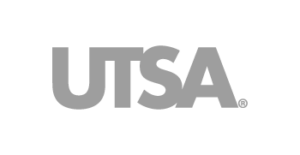Early on the morning of Aug. 29, 2005, the flood waters from Hurricane Katrina cascaded into the Murphy Oil Refinery in Chalmette. An above-ground storage tank holding 65,000 barrels of oil stood in the water’s path. The oil alone weighed 19.5 million pounds, but the flood surge easily shrugged aside the tank. It ruptured, and oil poured into the surrounding neighborhood. More than 1,700 homes were damaged. Cleanup and damages cost Murphy Oil around $500 million.

Sabarethinam Kameshwar, assistant professor in LSU’s Civil & Environmental Engineering Department
Sabarethinam Kameshwar, an assistant professor in LSU’s Civil & Environmental Engineering Department, wants to make sure these kinds of spills never happen again. He is working on software to create a tank anchoring system, and his 2023 I-Corps IdeaLaunch training is helping him turn his idea into a business.
“The reason I wanted to do I-Corps was to get more feedback from the industry,” he said. “My hypothesis is that this is a problem, and it needs to be fixed. A foot or two of water can float a partially filled tank as easily as a can of soda.”
I-Corps training presented Kameshwar with additional questions. Did industry see untethered tanks as a problem? Did industry already have a solution? Did industry even want one? After all, no state or federal laws require “tanchoring” although the consequences may be severe. Murphy Oil found that out the hard way.
“The whole idea of I-Corps is before an inventor like Kameshwar goes in and builds this technology, let’s talk to the people who would use it. Let’s see exactly what they need and make sure that what we’re doing caters to their needs, and we can solve their problem,” said Jacob Clemmons, I-Corps program manager at LSU.
LSU is one of eight members of the National Science Foundation’s I-Corp Hub: Southwest. By combining resources, hub members like LSU can double or even triple the number of prospective entrepreneurs trained each year. The program teaches participants what makes their technology commercially valuable and how to find the customers who want it.
Kameshwar said I-Corps helped him refine his idea and accelerated his learning curve. IdeaLaunch forced him to talk to 30 industry members and get their feedback. The program taught him to gather information in an objective fashion, to listen to industry members rather than trying to persuade them that his approach was best. In the process, Kameshwar discovered industry members’ pain points, what they were willing to do to address the tanks’ vulnerability, and whether he should pursue his idea or move on.
“I-Corps shows you a structured way of thinking about the business, about commercialization, the steps to follow, so that it’s a seamless process from idea to startup,” Kameshwar said. “And the process takes place in a safe environment. So, if the idea fails, that may be sad, but it also means you didn’t waste four or five years on something unworthy of your time.”
Clemmons said the 30-interview requirement gets researchers out of the lab and teaches them to communicate with people who have a business vocabulary versus an academic one.
Learning a different way of thinking and communicating takes time. IdeaLaunch recommends participants set aside 15 hours a week or more for the seven-week program. Kameshwar enrolled in the fall session when his schedule was lighter. He plans to apply for the spring cohort of the National I-Corps Teams program, which provides seven weeks of training and up to $50,000 in support.
The national program will help him better define the business and its final form, Kameshwar said, whether that means commercializing the software or creating a nonprofit to deliver the technology at cost.
“I don’t know if I want to make money off of this thing, but at least I want this to be implemented so that we can prevent tanks from failing during floods,” Kameshwar said.








